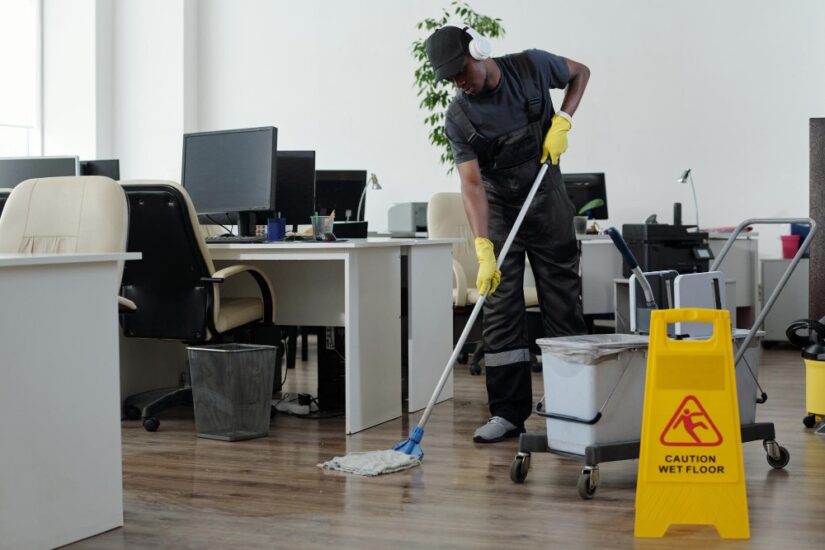Introduction
Facilities management (FM) is one of those disciplines that most people don’t notice when it’s working well—but when it’s missing, everything grinds to a halt. It’s the practice of making sure buildings, people, and processes all work together seamlessly. From the heating and lighting in your office to the safety systems protecting employees and visitors, facilities management underpins how organizations function on a daily basis.
If you’re new to the field, or simply want a clearer understanding of what it involves, this guide covers the essentials of facilities management: what it is, why it matters, and how it’s evolving in a changing workplace.
Learn more about our facilities management services.
What is Facilities Management?
At its core, facilities management is about maintaining and improving the built environment. That means looking after the physical assets—such as buildings, utilities, and equipment—while also managing the services that support the people using those spaces.
Think of it as a bridge between the physical workplace and the people who depend on it. A facilities manager ensures that HVAC systems run efficiently, office layouts are optimized for collaboration, and safety standards are met without compromise. The goal is always the same: create a safe, efficient, and productive environment where organizations can thrive.
Types of Facilities Management
Facilities management is typically divided into two main categories:
Hard FM
Hard FM refers to the physical, non-negotiable aspects of a building. This includes electrical systems, plumbing, heating and cooling, fire safety equipment, and structural maintenance. Without hard FM, a workplace simply can’t function safely or efficiently.
Soft FM
Soft FM, on the other hand, is more people-focused. It covers services like cleaning, catering, security, and reception management. These are the things that influence how employees and visitors experience the workplace every day. Together, hard and soft FM create a balanced facilities strategy that addresses both infrastructure and experience.
Core Responsibilities of a Facility Manager
A facility manager’s job is both operational and strategic. On one hand, they oversee day-to-day functions such as scheduling maintenance, coordinating vendors, and responding to service requests. On the other, they are responsible for long-term planning—finding ways to reduce costs, improve energy efficiency, and enhance the workplace experience.
Because the role touches so many parts of an organization, facility managers often find themselves at the center of decision-making. They ensure compliance with health and safety regulations, plan for emergencies, and manage budgets that directly impact an organization’s bottom line. In many cases, they are also tasked with supporting new ways of working, such as hybrid office setups or flexible spaces.
Tools and Technologies in Facilities Management
Technology has reshaped facilities management more in the last decade than in the previous fifty years. Tools like Computerized Maintenance Management Systems (CMMS) have become standard, helping facility teams schedule and track tasks more efficiently. Meanwhile, the rise of IoT sensors allows real-time monitoring of everything from energy usage to occupancy levels.
Predictive maintenance software can now anticipate equipment failures before they happen, reducing downtime and repair costs. And energy management systems are helping organizations cut waste while meeting ambitious sustainability goals. In short, technology is no longer a supporting tool—it’s central to how modern facilities are managed.
Trends Shaping the Future of Facilities Management
The role of facilities management is evolving quickly, driven by new technologies and changing workplace expectations. Sustainability is no longer optional; organizations are looking to reduce their carbon footprints through smarter building design and energy-efficient operations. Hybrid work has also transformed the way facilities are used, forcing managers to rethink space planning and resource allocation.
Smart buildings are becoming the norm, with integrated systems that automatically adjust lighting, heating, and even desk allocation based on occupancy data. Meanwhile, predictive analytics is helping facility teams plan further ahead, moving beyond reactive problem-solving to proactive management.
Why Effective Facilities Management Matters
When facilities management is done well, it has a ripple effect across the entire organization. Employees feel safer and more comfortable, which boosts productivity. Assets and equipment last longer, which reduces long-term costs. And compliance with health, safety, and environmental regulations protects both the organization and its people.
In short, facilities management isn’t just about keeping the lights on—it’s about creating workplaces that support business goals and enhance the employee experience.
Getting Started in Facilities Management
For those considering a career or seeking to improve their knowledge, the best place to begin is by understanding the balance between hard and soft FM, and the role of technology in managing both. Certifications from professional bodies such as IFMA or BIFM can also provide a solid foundation and open doors to career opportunities.
Most importantly, successful facilities management is about adaptability. Buildings, people, and technologies will continue to change—but the need for safe, efficient, and well-managed workplaces will never go away.
Conclusion
Facilities management may be broad in scope, but at its heart, it’s about creating spaces that work for people and organizations. From maintaining the infrastructure to shaping the workplace of the future, facility managers play a critical role in business success.
If you’re looking to deepen your knowledge, the best next step is to explore how facilities management can reduce costs and improve efficiency.










